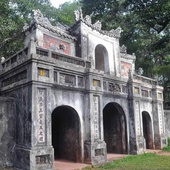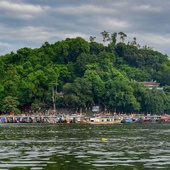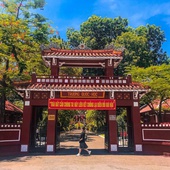Hue Imperial Citadel
Famously being one of Vietnam’s seven UNESCO World Heritage Sites, the Imperial City of Hue has long been a must-see attraction for tourists visiting a hidden charm of Vietnam.
The Imperial City of Hue is a remarkable walled fortress and palace that served as the capital of the Nguyen Dynasty from 1805 until 1945. This historic site is a key element of the ancient city of Hue, reflecting Vietnam's rich cultural heritage.
Construction of the grand architecture began in 1803 under the direction of Emperor Gia Long, the founder of the Nguyen Dynasty. The Imperial City was completed after 27 years, during the reign of Emperor Minh Mang from 1805 to 1832. It stands as one of the largest structures in the history of modern Vietnam, built with the effort of thousands of laborers, utilizing millions of cubic meters of materials. Located on the northern bank of the Huong River, the site spans a total area of 520 hectares. In 1993, it was designated a UNESCO World Heritage Site, and extensive restoration efforts have been undertaken to preserve its historical significance following the devastation of the Vietnam War.
 Photo by Văn Long Bùi from Pixabay
Photo by Văn Long Bùi from Pixabay
The Imperial City of Hue boasts a circumference of 10 kilometers, standing at a height of 6.6 meters with walls measuring 21 meters in thickness. The fortifications are intricately designed, featuring strategically positioned cannons and artillery. Originally constructed from earth, the fortress walls were later reinforced with bricks. Surrounding the city is a complex system of canals that not only provided protection but also facilitated transportation, spanning nearly seven kilometers.
Visitors can enter the Imperial City through ten main gates, which can be divided into two primary sections: The Citadel and The Forbidden City. The Citadel was designed to safeguard the significant palaces within, while The Forbidden City functioned as the residence of the emperor and the royal family, as well as the court's administrative center. The site showcases a variety of traditional Eastern architectural styles, including magnificent palaces, tombs, and museums, creating a captivating attraction in the heart of Vietnam.
Getting to the Imperial City is straightforward. From Phu Bai International Airport, take the 1A Highway and you will arrive directly at one of the grand gates leading inside. There is an admission fee of 50,000 VND (approximately $2.10 USD), allowing you to explore and experience the splendor of the Imperial City of Hue.
Useful Information
- Location: Kinh Thành Huế, Việt Nam
- Best for: None
- Entrance: Free
- Hours: None
- Distance to city center: 1.6km (1.0 mi)

Tu Hieu Pagoda
In Hue - one of Vietnam's most sacred lands of Buddhism, Tu Hieu is regarded as the largest and oldest pagoda, and also a famous sightseeing spot with historical and cultural value.

Hon Chen Temple
Hon Chen Temple is situated on a lovely slope of Ngoc Tran Mountain, 10km upstream from Hue Centre. The name “Ngoc Tran'' means Pearl Bowl, originating from the bowl-shape of the mountain. That also gives the temple its name: Hon Chen.

Quoc Hoc Hue - Century Old High School
Being the first and also the oldest high school in Vietnam, originally Quoc Hoc (National high school) was the school for children from royal and noble families.








